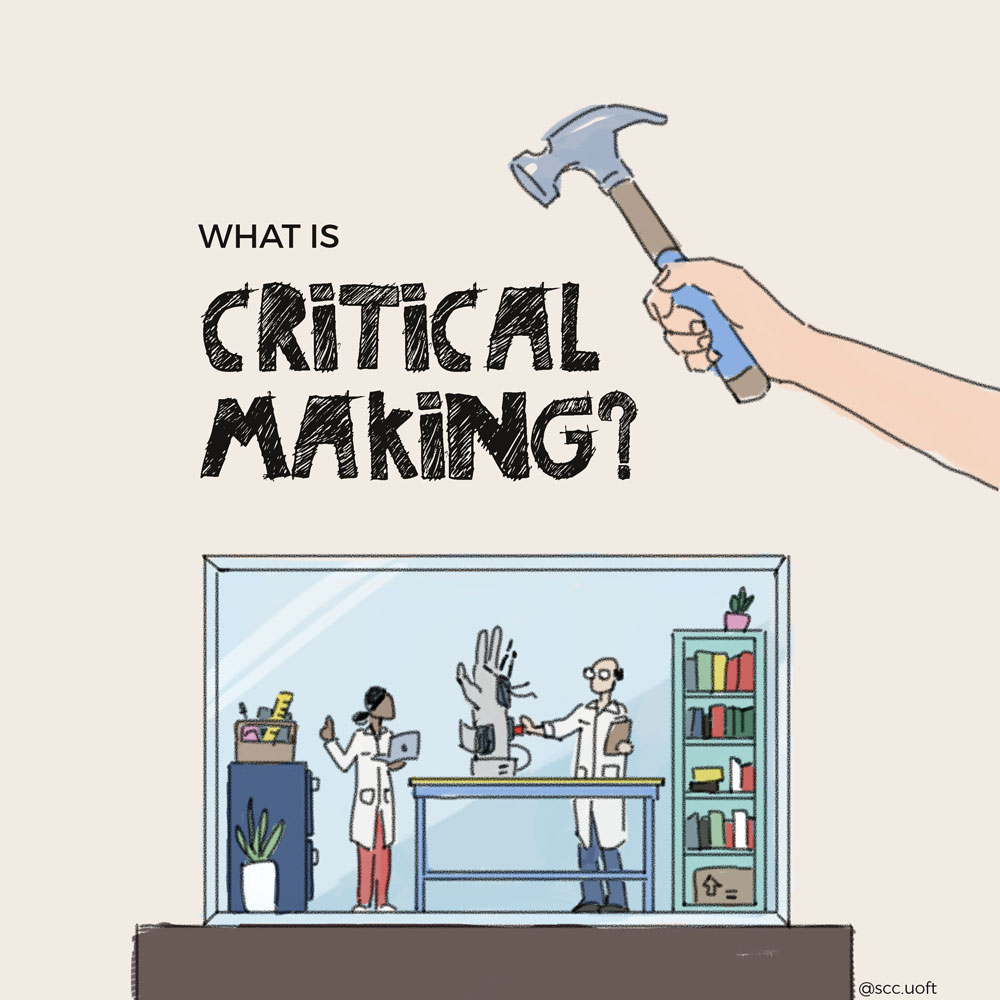
Written by Hayley McKay
Illustrated by Amy Jiao
Dr. Matt Ratto, a professor in the Faculty of Information at U of T, defines critical making as “a mode of materially productive engagement that is intended to bridge the gap between creative and physical and conceptual exploration.” Okay… but what does that actually mean? Instead of regurgitating a complicated, wordy paper, we are going to break this seemingly weird and abstract concept down into plain English because it is actually really cool and worth leaning about! So here it is:
Critical making lies at the intersection of humanities insights and engineering practices, and in essence, is attempting to study the relationship between technology and human social life. Critical making attempts to bridge the gap between the digital, physical, sociological and engineering worlds in order to study the social aspect of technology. It’s a really important concept to use in order to begin breaking down the divide between technological production and human culture. Because really, how can we be producing all these things for society to use without thinking about how they will actually impact society?
The concept of critical making exists to challenge the way we create things. It is meant to push the boundaries of social and consumer norms by taking the time to think about human-oriented values and experiences – essentially, thinking more about what it means to be human in the midst of our digital and technological society. It takes a step back then dives deep into the actual “making” process of an object or piece of technology – how it will impact the people who use it, how it impacts the people who make it. Critical making focuses on the process, where the end product is not actually the main focus.
As abstract as this concept of critical making is, once you start to wrap your brain around it, and think about it more, you will begin to see how important it is to take a step back and think about how and why we make things, and how they impact us all on a social level.